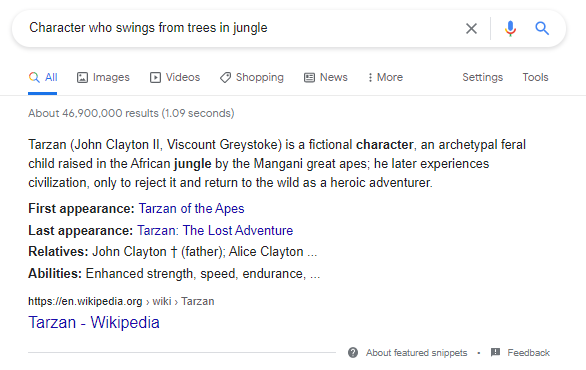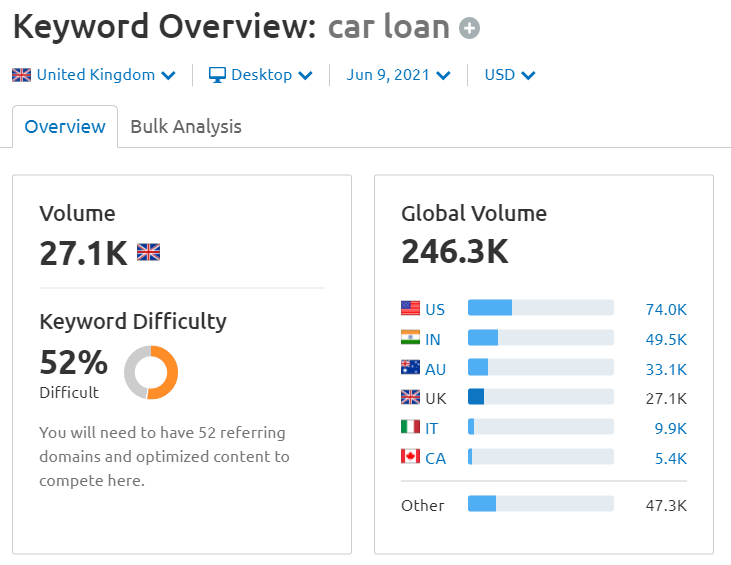
Read time: 5 mins
Written by Josh Westerman
To ensure user search intent can be understood at the most granular level of detail possible, search engines are constantly evolving and fine-tuning their algorithms, with the development of semantic features being at the heart of this.
These changes all come at the benefit of an end user. Nobody wants to be served with the incorrect search results when looking for the answers to a query, so the use of semantic search enables intent to be understood at a much greater level.
Read on to find out more about what semantic search is and why it’s an important factor to consider when creating content.
Top level, semantic search uses the intent from the user, the context of a query and the relationship between words to deliver the most relevant and accurate search result.
It was originally devised to help better understand the intent of a search through its contextual meaning to help deliver better results. It’s worth remembering that 15 per cent of searches have never been made before, so search engines having this semantic and contextual understanding is integral to providing users with a result personalised to their query.
To understand what a semantic search is, let’s first look at how a search is processed. Here, we’re looking to find out what character swings from a tree in the jungle – which is, of course, Tarzan.

According to SEMrush, there is a process that a search goes under, with each step referencing our Tarzan example in red below:
Character who swings from trees in jungle
“character” “swings” “trees” “jungle”
Q&A, how-to guide, news, videos AND Fictional characters, actors, movies, television shows
Wikipedia, movie database
A character who swings from trees in the jungle is Tarzan
Tarzan
Semantic SEO looks to offer much more value than just the answer to a question we’re asking too. It looks at location-based results (for example, if you search “content marketing agency” it would bring up the ones nearest to you, and likewise for shops, restaurants and haberdasheries), derivatives or spelling mistakes of words (for example, is you were after Brand8 PR and accidentally searched Brnd8 PR) and “of-the-moment” trending topics.
Of the latter of these, a key example of this is ‘corona’ – in 2019, this would have returned a search of a bottle of ice-cold lager, but today brings you information on the global pandemic-causing virus.
When it comes to semantic search, there are two key areas which need to be taken into consideration when curating content:
To ensure you’re following the best practices when it comes to semantic SEO, the rule to remember is that you need to focus on the topic, rather than the specific keyword, when it comes to creating content.
Let’s use an everyday search example. The terms ‘car loans’, ‘car loan’, ‘vehicle loan’ and ‘motor loan’ all mean the same thing, and Google fully understands that the intent for these four searches all want the same desired outcome.

Previously, individual webpages may have been set up for all four of these search terms to ensure traffic from all of these is captured, but today this isn’t necessary. Google understands that these terms are all semantically linked around a specific topic.
Using SEMrush’s Keyword Overview Tool, we can see the search volume figures around the term ‘car loan’.

However, when we look at the topic as a whole to include the semantic variations, this webpage around car loans could benefit from terms with much higher search volumes compared to using just one specific keyword. Plus, this data also showcases the opportunity to capture key questions around car loans too.
This is a key part of any content creation process, as if you curate content which meets a user’s intent, you’ll find it easier to rank nearer the top of the desired SERPs.
Essentially, the search intent for any web query would usually fall into the category of wanting to learn something, buy something or find something (for example, a location). Each of these categories will have specific keywords which correspond to them that a user will search to get the desired result.
In keeping with the car analogy above, if a user was wanting to compare different car models, they’d be looking to learn something about these cars rather than to buy a car at that exact moment.

This is why creating different content to meet the needs of the different search intent categories is important. However, the key point to remember here is that the issue isn’t the duplication of the keywords across different pieces of content, it’s the duplication of intent across different pieces of content. It’s worth noting that using the same keyword across multiple pages may not be causing you to duplicate your efforts – SEMrush’s guide on keyword cannibalisation goes into this in more detail.
With 15 per cent of search queries never been made before, search engines need to be able to understand the intent of what a user is looking for. Whether it’s for informational, transactional or navigational purposes, semantic search enables the relationship of words to be processed and understood, delivering the user with the desired answer.
Make no mistake, well-optimised high-quality content is required to win the SERPs battle, however the key is to look at the topic rather than the individual keywords to ensure your copy, visuals or video is all encompassing, rather than being tunnel-visioned down one rabbit whole.
For more information on how we can help ensure your content is ticking all the right boxes when it comes to semantic search, get in touch with our head of content Josh today on t: +44 (0)7432 655440 or e: josh.westerman@brand8pr.com